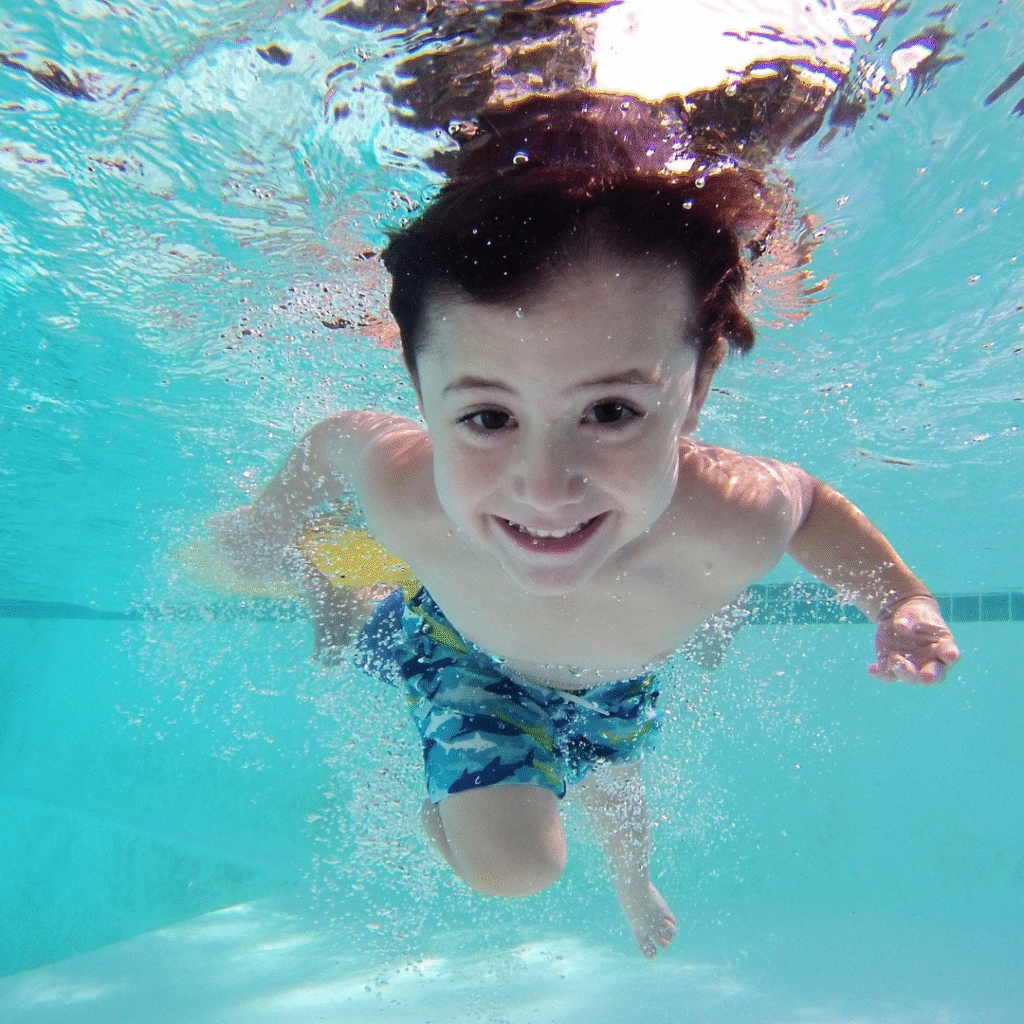
Swimming Saves Lives: How Swim Lessons Reduce the Risk of Drowning in Infants
Drowning is a leading cause of accidental death for children ages 1 to 4, according to the Centers for Disease Control and Prevention (CDC). It surpasses car accidents, burns, and even certain forms of disease in terms of risk. But here’s what every parent should know: swimming lessons save lives—especially when introduced early.
At Blue Dolphin Swim School, we specialize in infant swimming and early water safety education. While no class can replace constant supervision, introducing water early, through a professional swim lesson curriculum, can help prevent tragedy, improve confidence, and instill lifesaving knowledge in both children and their caregivers.
Why Drowning Prevention Must Start Early
Each year, thousands of families visit the emergency department due to water-related injuries. And yet, drowning is often silent—no splashing or yelling—making it harder to catch in time. In fact, the World Health Organization classifies drowning as one of the top threats to child survival globally.
Infant swimming provides an early foundation in essential water safety concepts. While children under age 1 may not yet master full strokes like breaststroke, they can develop skills like floating, breath control, and moving toward safety.
Key elements of early swim lessons include:
- Getting used to liquid on the face and head
- Learning how to keep the brain calm in water
- Floating on the back to conserve oxygen
- Practicing movement in swimming pools, hot tubs, and bathtubs
The Science Behind Swim Lessons and Survival
A study from the National Institutes of Health showed that formal swimming lessons can reduce the risk of drowning by 88% in children aged 1–4. The American Academy of Pediatrics (AAP) now recommends that all children begin lessons around age 1, especially if they have access to a pond, pool, bathroom, or irrigation system at home.
At Blue Dolphin, our curriculum emphasizes:
- Building endurance and safe behaviors in and around water
- Teaching parents to act as water watchers—alert, sober, and distraction-free
- Training in first aid and cardiopulmonary resuscitation (CPR) for parents, using guidelines from the American Heart Association and American Red Cross
Swim Lessons as More Than a Sport
Swimming is more than exercise or recreation—it’s a life skill. While your child may one day join a swim team, what they learn early on could one day save their life. At this stage, lessons don’t focus on technique but rather on breathing, floating, and calm behavior in emergencies.
We also teach awareness of dangers in places like:
- Toilets or toilet seats
- Boats without personal flotation devices approved by the United States Coast Guard
- Open bodies of water like rivers, oceans, or areas near drainage systems
Children are also introduced to safe pool behaviors: never swim without an instructor, never touch a drain, and always swim where a lifeguard is present.
Creating Safer Environments Around Water
Preventing access to water is just as important as what children learn in the pool. That’s why we educate parents on:
- Installing proper fences and gates around pools
- The importance of the Virginia Graeme Baker Pool and Spa Safety Act
- Avoiding distractions like alcohol when supervising swim time
- Recognizing symptoms of pulmonary edema, cyanosis, or hypothermia in cold water
- Securing access to the bathroom, bathtubs, and toys that might attract children to water
Why Parents Matter in the Learning Process
Parental involvement is vital, especially in early classes. Whether you choose private lessons or group instruction, your presence helps reduce fear, increases comfort, and allows for better skill retention. Even infants benefit from consistent exposure, positive reinforcement, and being part of a caring community focused on injury prevention.
Our instructors, trained in emergency medicine, understand how to create a positive, engaging space that supports healthy behavior, mental health, and physical development—even during pregnancy, when mothers want to introduce water early to older siblings.
FAQs: Infant Swim Lessons & Drowning Prevention
- Can swim lessons really prevent infant drowning?
Yes, especially for toddlers aged 1–4. While infants under 1 may not lower their risk statistically, they gain valuable exposure, calmness in water, and safety habits that lay the foundation for future skills.
- At what age should swim lessons start?
The American Academy of Pediatrics recommends beginning lessons around age 1. However, earlier classes can help infants become more comfortable and bond with caregivers in water.
- Are home pools safe if I supervise?
Not without proper layers of protection. Install a fence, use a self-closing gate, keep drains compliant with federal laws, and always act as a dedicated water watcher—no texting, drinking, or multitasking.
- What should a swim lesson for infants include?
A structured class with a certified teacher, a low student-to-instructor ratio, gradual exposure to submersion, floating, and water entry/exit practice—plus education for caregivers.
- What are warning signs of a water-related emergency?
Look for signs of fatigue, confusion, persistent cough, gasping, blue lips (cyanosis), or difficulty breathing—these may point to edema, inhaled water, or even pulmonary distress.
- Can my child “grow out” of fear of water?
Fear must be gently addressed through learning, exposure, and support—not avoidance. Positive swim experiences early on can reduce anxiety and improve long-term confidence.
Start Your Child’s Lifesaving Swim Journey Today
Drowning is fast, silent—and preventable. Swimming lessons are not just a form of sport or recreation—they’re a shield. They are backed by health professionals, safety agencies, and real-world data as one of the most effective tools for reducing childhood mortality.
At Blue Dolphin Swim School, our team of certified instructors builds confident, safe swimmers from the very beginning. We combine expert teaching, a proven curriculum, and compassionate support to empower families across every stage of the swimming journey.
Join us and give your child the skills that truly save lives. Visit www.bluedolphinswimschool.com to enroll today.

